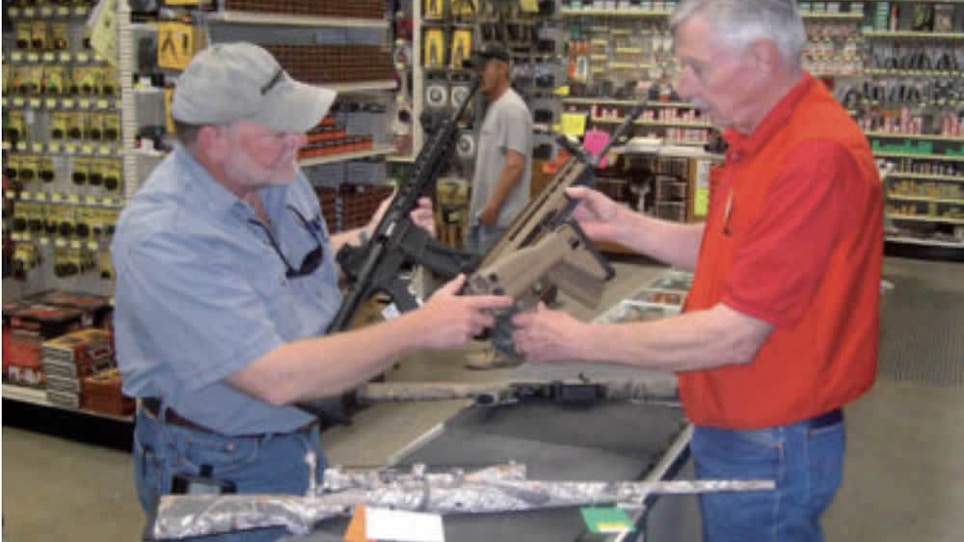The forecast of shooting sports is supremely bright, as stars continue to align in favor of the industry.
President Trump’s nomination of Brett M. Kavanaugh to the U.S. Supreme Court is pivotal, in that confirmation of Kavanaugh will assure that there is a reliable majority of constitutionalists on the court for the first time in a long time. This ends decades of activist judging — legislating from the bench. It means decisions will be made on what the Constitution and laws actually say rather than what judges might want them to mean.
When Neil Gorsuch joined the high court last year, succeeding the late Antonin Scalia, it reestablished an on-again, off-again “balance” that resulted in a number of 5-4 decisions in which Justice Anthony Kennedy was the “swing” vote. Kavanaugh replaces Kennedy.
Bottom line: Now there is a majority of constitutionalists on the court. In the shooting sports industry, where the Second Amendment to the Constitution is critical, this is huge. Looming even larger, however, is the probability that the president will have at least one more chance to appoint a jurist to the high court (by comparison, President Franklin D. Roosevelt appointed eight justices to the Supreme Court during his 12 years in office) and President Trump is consistent in appointing constitutionalists to the court. Should that happen, there would be a hard majority that likely would make all future decisions for decades based on constitutionality.
Such a situation would be outstanding on its own, but there is much more. Concurrently, the president has been appointing federal judges to lower courts at a fast pace — 42 at this writing and there are 145 vacancies, which means there will be more and more as time goes by.
This is important because most court cases are decided at the lower courts, so a majority of constitutionalists there establishes constitutionalism throughout the federal system. And the difference in the concepts of how the entire court system is used is just as important. If the revisionists (anti-gun crowd) think they can have their way in the courts, they are much more likely to launch more lawsuits than when they realize that certain kinds of lawsuits are dead on arrival, so to speak.
But there is more good news relative to the shooting sports industry. The administration is also eliminating burdensome regulations, many of which strangle businesses, even entire industries. Couple that with a realignment of regulatory agencies, and much of the heavy burden put upon the shooting sports industry by the previous administration is now beginning to lighten and should continue to do so into the near future and beyond.
It looks as though well over a thousand federal regulations have either been eliminated or stalled to date, and reports indicate that the current administration is eliminating regulations steadily at a multiple of the number of new regulations that are being introduced. Not all regulations directly affect the shooting sports industry, but many do, whether they involve shooting matters specifically or just general business matters that affect all businesses.
A general boost in the economy is also good news because a rising tide lifts all ships, as they say. When the customer base has more expendable income, money comes across the counter.
But there are counteracting forces, as well. For example, the shooting sports industry kept setting new records year after year when the previous administration threatened private ownership and use of firearms. That could not have continued forever under any circumstances.
Hence, there was a post-Obama blush in sales, which may still be continuing in some segments of the industry. But overall the hangover that followed the binge wasn’t as dramatic as some feared, and didn’t last as long as others thought it might.
The truth is that during the panic buying days, the shooting sports’ base increased significantly and into areas where it had not been big before. For example, more women joined the ranks of gun owners and shooters, and gun owners overall are shooting more now than before.
And there is the matter of how much the talk and threats of tariffs will hurt or help the shooting sports industry. The jury still seems to be out on that one, but overall there doesn’t seem to be any level of disaster lurking over the horizon. Trade happens in all directions in the shooting sports industry, so generally when there is a problem in one segment, there is a solution in another.
As all of the changes continue on the national front, the focus now needs to be at the state and local levels. That is where the biggest challenges for the shooting sports likely will be found in the coming years, assuming that things are shored up at the federal level. This is because local governing bodies can take swift and decisive action that can result in permanent problems, or problems that can persist until they are straightened out in the various courts, which can take years and cost fortunes to resolve.
Overall, the future looks good for the shooting sports industry, which includes retailers, and should continue to improve as the effects of the right kind of judges are combined with fewer regulations and a robust economy.






